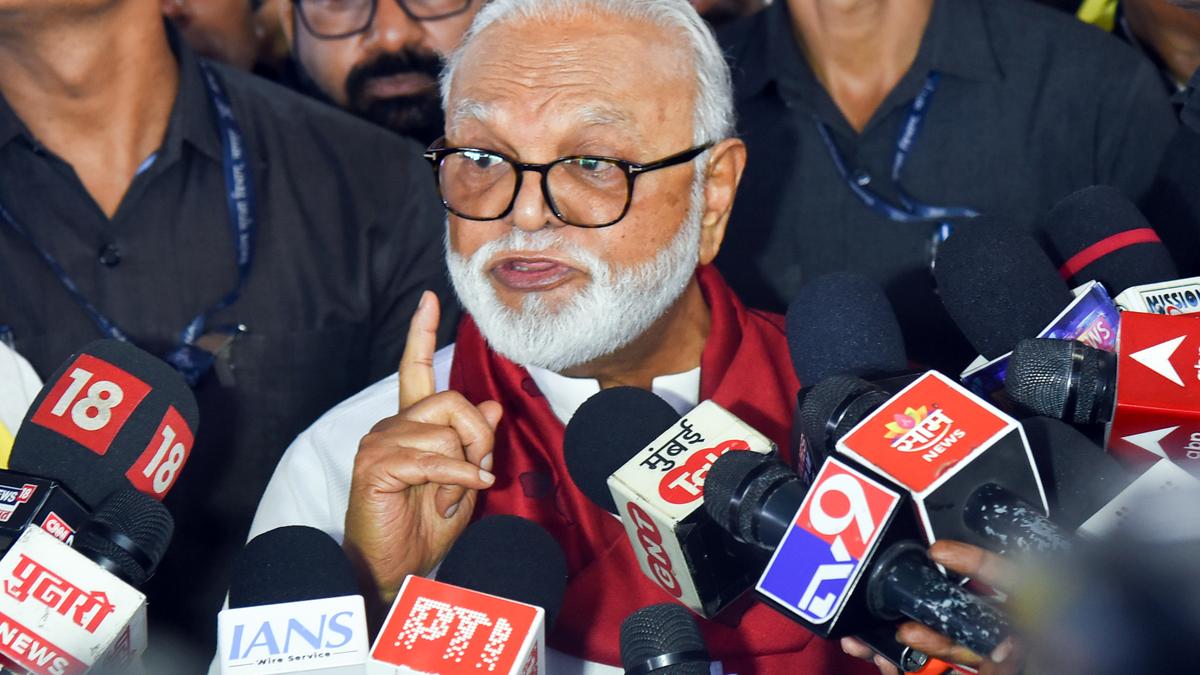Nature divine: In Encyclopaedia of the Nilgiri Hills, anthropologist Paul Hockings
says the Rangaswami Peak is the “holiest mountain” of the Irulas and “perhaps the seat of the original, indigenous worship of a mountain god”.
| Photo Credit: M. SATHYAMOORTHY
In a lesser known part of Kil Kotagiri in the picturesque Nilgiris, a singular spire rises above the surrounding terrain. Measuring over 400 feet, the spire, known as Rangaswami Pillar, is worshipped by the Irula tribe as a deity. The rock formation, along with the Rangaswami Peak nearby, is one of the most sacred of sites for this indigenous adivasi community. The Rangaswami Peak hosts the annual harvest festival of c in May and June every year. It is attended by the Irulas from surrounding regions; but more recently, it has become popular among non-adivasi members too. The five-week festival ends with a special worship performed only by the Irula community.
P. Kannan, an Irula from Kotagiri, told The Hindu that he had heard tales of the cultural significance of the Rangaswami Peak and Pillar from his elders. He said the Irulas celebrate the harvest from their “millet land” in May and June. “They will perform pujas for five weeks praying to the deity to ensure another good harvest and good spell of rain in the coming year,” he said.
Scaling the peak
He added that according to adivasi folklore, a particular head of cattle made its way to the peak leaving behind the rest of the herd, leading to the site being worshipped over thousands of years.
Writing in his Encyclopaedia of the Nilgiri Hills, anthropologist Paul Hockings says the Rangaswami Peak is the “holiest mountain” of the Irulas and “perhaps the seat of the original, indigenous worship of a mountain god”. He says the name of the god worshipped here is Ranga or Ranganada. Other members of the community highlight the lore surrounding the main idol at the site, which had allegedly been broken by a foreigner during his visit to the site. “It is said he died soon after he reached his home country,” an elderly member said.
“Several conclusions may be drawn from a visit to the Rangaswami Peak. First, it shows, as do other aspects of the Irula religion, a Vaishnava-Saiva syncretism developed around an indigenous Irula deity.” Mr. Hockings goes on to add that the peak is important for other communities too. “Third… there is the relationship between the Kotas and the Irulas, as suggested by Richard Wolf. He mentions a legend in which the Nilgiri ‘god’ revealed himself to a Kota and an Irula walking together. Both the Kotas and the Irulas began to worship the Nilgiri god at the same spot until some quarrel separated them: the Irulas began worship on Rangaswami Peak and the Kotas near their village.”
The Rangaswami Pillar, located close to the peak, was the site of an air crash in 1950, in which noted statistician Abraham Wald and 19 others died. “The air crash enhanced the magical aura of the pillar’s divinity,” says Czech Indologist Kamil V. Zvelebil.
Photographic records
S. Udhayakumar, Director (in-charge), Tribal Research Center, Udhagamandalam, said the site was of interest to researchers. “The Tribal Research Center, on the State government’s orders, has completed the video and photographic records of all six of the Nilgiris’ adivasi communities, and is set to publish them soon,” he told The Hindu. The exercise will ensure the preservation of the culture, customs, habits, and sacred sites of the Irulas as well as other adivasis in the Nilgiris.
With the growing popularity of the temple atop the Rangaswami Peak, activists have become concerned about the impact of temple tourism. K. Mahendran, an adivasi rights activist, said adivasi temples across the Nilgiris are being increasingly patronised by non-adivasi groups. “While it is still impossible for non-adivasis to worship at the temples belonging to some groups such as the Todas and the Kotas, it should be a matter of concern that this interest in the temples of the Irulas and the Kurumbas could lead to the indigenous people’s traditions and culture — inextricably linked with these temples — becoming diluted over time,” he said.
Activists also voiced concern over potential damage to the environment in the area around the Rangaswami Peak due to temple tourism. Officials of the Forest Department said the path to the temple cuts through a reserve forest, and is open only during the festival season. “Strict rules are also in place to prevent littering and minimise disturbance to the wildlife,” an official said.
Published – June 05, 2025 10:13 pm IST




